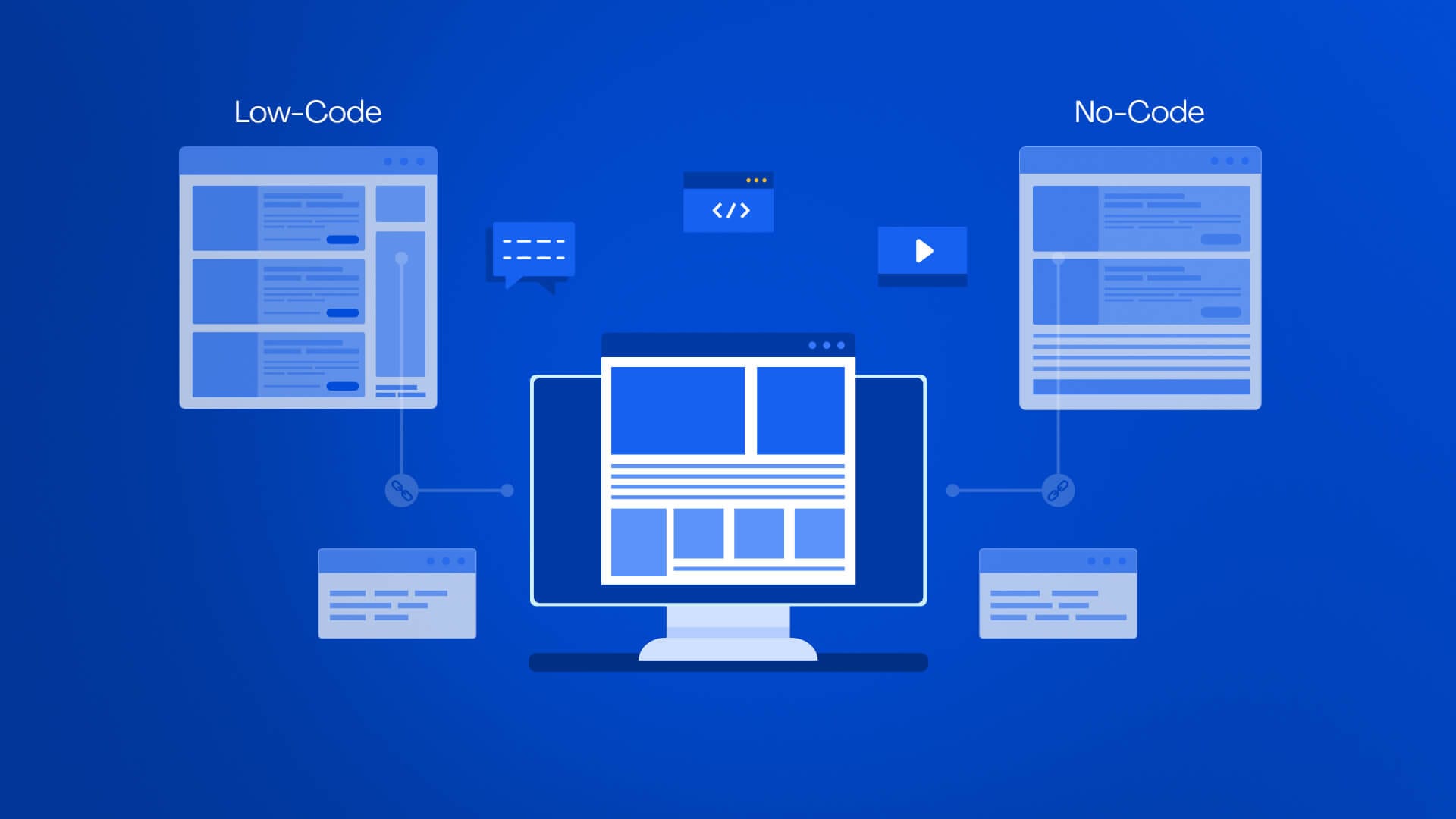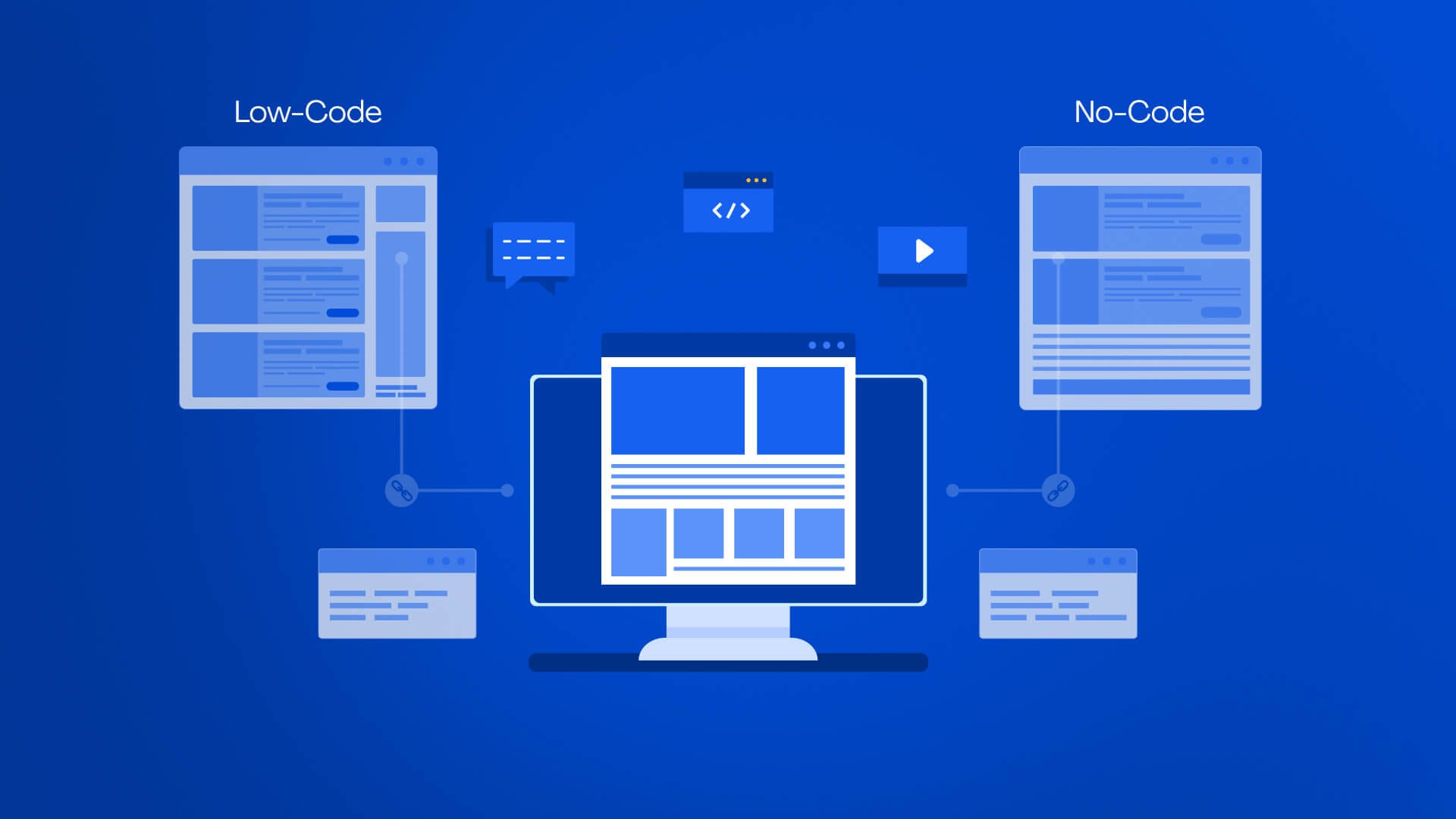More Great reads!

Low Code No Code / July 21, 2025
by Ravi Talajiya
Low-Code vs No-Code: Key Differences, Roles, and When to Use Each
Low Code No Code/ / 03 Jul, 2025

Table of contents
Pressure to design digital applications at warp speed leads to continuous transformation in the software development sector. With rising costs and a worldwide undersupply of developers, organizations are turning to low-code-no-code platforms to eliminate obstacles and gain speed. Let’s understand this terminology in detail.
No-code low-code application development represents web & app development methods that eliminate or reduce manual coding and programming by using visual tools, pre-configured systems, and logic flows.
These systems typically contain hosting, backend services, integrations, and security in a single window, so business analysts, product managers, and teams can directly contribute to development.
Gartner concludes that 70% of new enterprise apps will be developed with low-code or no-code by 2025. InfoWorld cites low-code tools reaching $44.5 billion in revenue by 2026, growing at 19% compounding annually. IDC estimates the overall low-code development market at $21 billion by 2026, growing at 17.8%. These figures indicate low-code-no-code development as a structural change rather than a trend.
However, when it comes to development, the low-code vs no-code debate is all about finding the right fit and understanding the distinct features that set them apart. Let's dive into the advantages of both these platforms and explore what makes them tick.
One of the common benefits of low-code-no-code development is faster time to deployment. This speed enables testing ideas swiftly and avoids investment in projects that might fail. The cost advantages are significant. Low-code platforms are known to reduce app and website development costs by 70% and time-to-market by approximately half.
Low-code and no-code app development systems are adaptable for internal business dashboards, MVPs, customer portals, and automation workflows. During the COVID-19 pandemic, healthcare workers quickly developed apps and websites for appointment scheduling without disturbing IT teams. Government organizations, retail, finance, education, and logistics leverage these systems to improve legacy systems. Big companies have also adapted to these platforms.
No-code low-code development service success needs a full-fledged strategy. Organizations need to have:
And then, there is supervision and training. Business owners need to be trained to apply UX principles, versioning, naming conventions, and documentation within visual development systems. Experienced developers and designers should follow customizations and make apps best-practice compliant.
Applications developed on these platforms must go through a complete software lifecycle. That includes for each project:
An in-house low-code application is worthy of the phases mentioned above, particularly if it processes sensitive data.
Finally, enterprises need to be prepared to innovate. Low-code applications will start life as prototypes or intra-enterprise applications, but as they expand in size or scale of users, teams need to be prepared to shift them to traditional code or adopt hybrid approaches. Having transition plans in place for changing platforms can avoid technical debt and vendor lock-in.
AI is a core element of low-code-no-code platforms. The platforms make suggestions based on AI while creating interfaces, data models, and runtime processes. For example, platforms such as Microsoft Power Apps can make form layout and logic suggestions dependent on the input data. Natural language processing enables the specification of application behavior in English, which is interpreted by the system as practical fragments.
Artificial Intelligence also runs background checks by facilitating tests like automated performance and UX quality. Predictive analytics and such features will be utilized to build apps faster and to constantly upgrade depending on usage metrics.
But AI must be considered as a helper and never a substitute. There is still a need for human judgment expertise to deliver quality and ethics, aligned with strategic objectives. AI support and human direction can accomplish more productivity without sacrificing control.
Low-code-no-code is not necessarily the answer to all app and website development processes. Very complicated applications that demand low-latency in operations, extensive backend integration, microservices, or specific performance needs typically are not an ideal fit for low-code or no-code. In most of those scenarios, traditional coding remains the best option.
Vendor lock-in might pose risks in the long term. If an application is heavily integrated with a precise platform's proprietary elements, it is costly or impossible to switch. Open standards and exportable code can eliminate this issue.
Security and compliance need to be set up with caution. While most vendor platforms include built-in controls, proper implementation is a shared effort. If not monitored, an organization may inadvertently violate rules or leak information.
Lastly, uncontrolled no-code or low-code adoption creates app sprawl. Various projects can spread across different departments, run by different standards, and therefore, the support load becomes heavier. Centralized administration is necessary in order to offer traceability and quality.
Worldwide, by the year 2030, the low-code industry is anticipated to reach $187 billion, expanding by over 30% per year. Non-technical developers, or citizen developers, are expected to account for 80% of platform consumers by 2026.
These platforms continue to innovate. Now, website and app developers also have tools that include DevOps feature sets, AI-led testing, and multi-channel ur distribution capability. Positively, no-code and low-code development is also in demand by ed-tech, government, and healthcare institutions.
Summing up,
Low-code/no-code development is rapidly progressing in software development. It’s playing a crucial role in cost reduction, accessibility, and acceleration in the digital transformation.
It can only succeed with a combination of strict governance and well-defined escalation paths to conventional development. AI is augmenting the low-code and no-code platforms, but the need for human intervention remains key.
Far from a trend, low-code-no-code is a revolution in software development and management. Used judiciously, these platforms enable organizations to construct superior, quicker digital tools without sacrificing quality. Its evolution will shape the future of development platforms.

Low Code No Code / July 21, 2025
by Ravi Talajiya
Low-Code vs No-Code: Key Differences, Roles, and When to Use Each